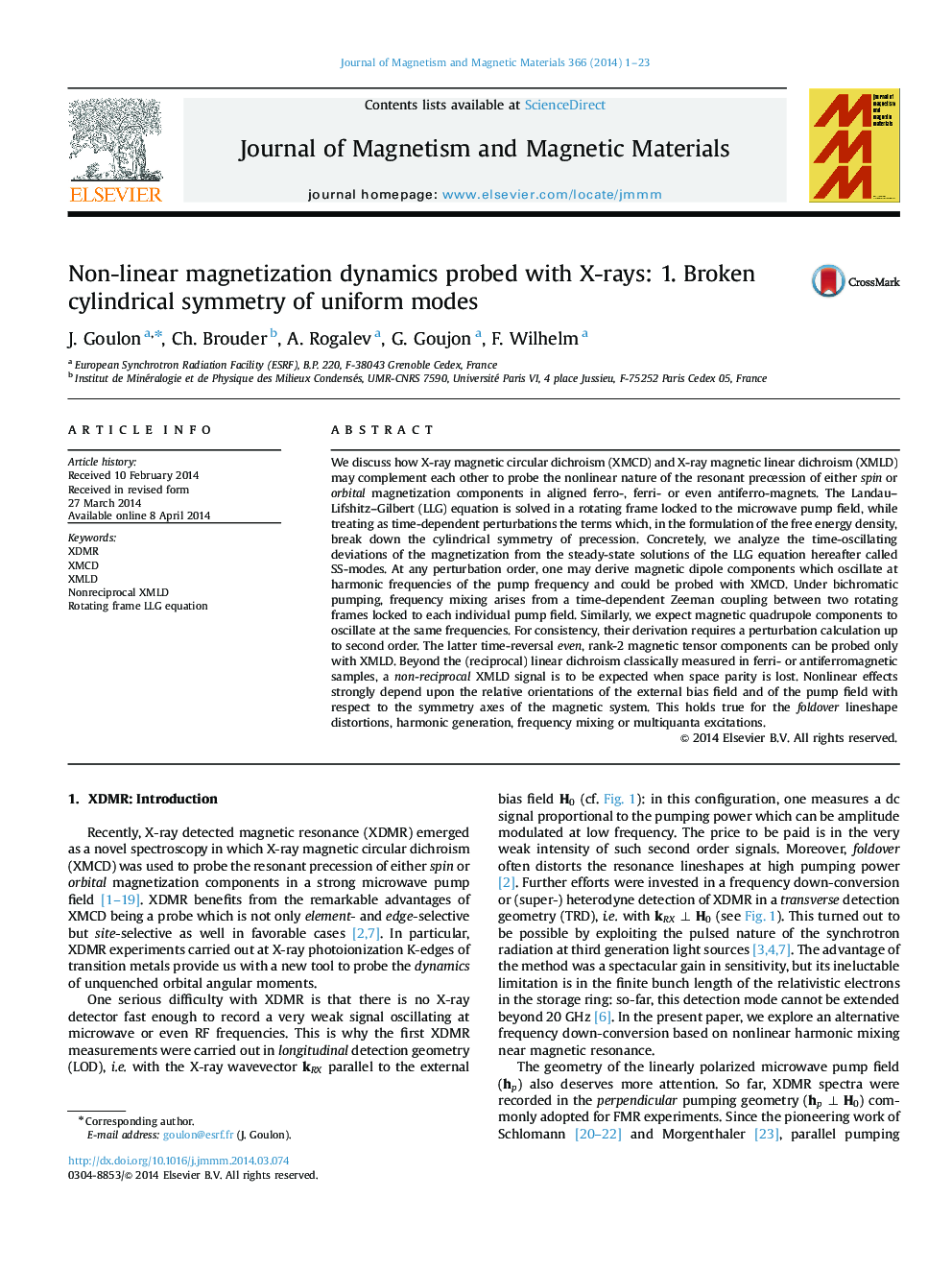| Article ID | Journal | Published Year | Pages | File Type |
|---|---|---|---|---|
| 1799616 | Journal of Magnetism and Magnetic Materials | 2014 | 23 Pages |
Abstract
We discuss how X-ray magnetic circular dichroism (XMCD) and X-ray magnetic linear dichroism (XMLD) may complement each other to probe the nonlinear nature of the resonant precession of either spin or orbital magnetization components in aligned ferro-, ferri- or even antiferro-magnets. The Landau-Lifshitz-Gilbert (LLG) equation is solved in a rotating frame locked to the microwave pump field, while treating as time-dependent perturbations the terms which, in the formulation of the free energy density, break down the cylindrical symmetry of precession. Concretely, we analyze the time-oscillating deviations of the magnetization from the steady-state solutions of the LLG equation hereafter called SS-modes. At any perturbation order, one may derive magnetic dipole components which oscillate at harmonic frequencies of the pump frequency and could be probed with XMCD. Under bichromatic pumping, frequency mixing arises from a time-dependent Zeeman coupling between two rotating frames locked to each individual pump field. Similarly, we expect magnetic quadrupole components to oscillate at the same frequencies. For consistency, their derivation requires a perturbation calculation up to second order. The latter time-reversal even, rank-2 magnetic tensor components can be probed only with XMLD. Beyond the (reciprocal) linear dichroism classically measured in ferri- or antiferromagnetic samples, a non-reciprocal XMLD signal is to be expected when space parity is lost. Nonlinear effects strongly depend upon the relative orientations of the external bias field and of the pump field with respect to the symmetry axes of the magnetic system. This holds true for the foldover lineshape distortions, harmonic generation, frequency mixing or multiquanta excitations.
Keywords
Related Topics
Physical Sciences and Engineering
Physics and Astronomy
Condensed Matter Physics
Authors
J. Goulon, Ch. Brouder, A. Rogalev, G. Goujon, F. Wilhelm,
